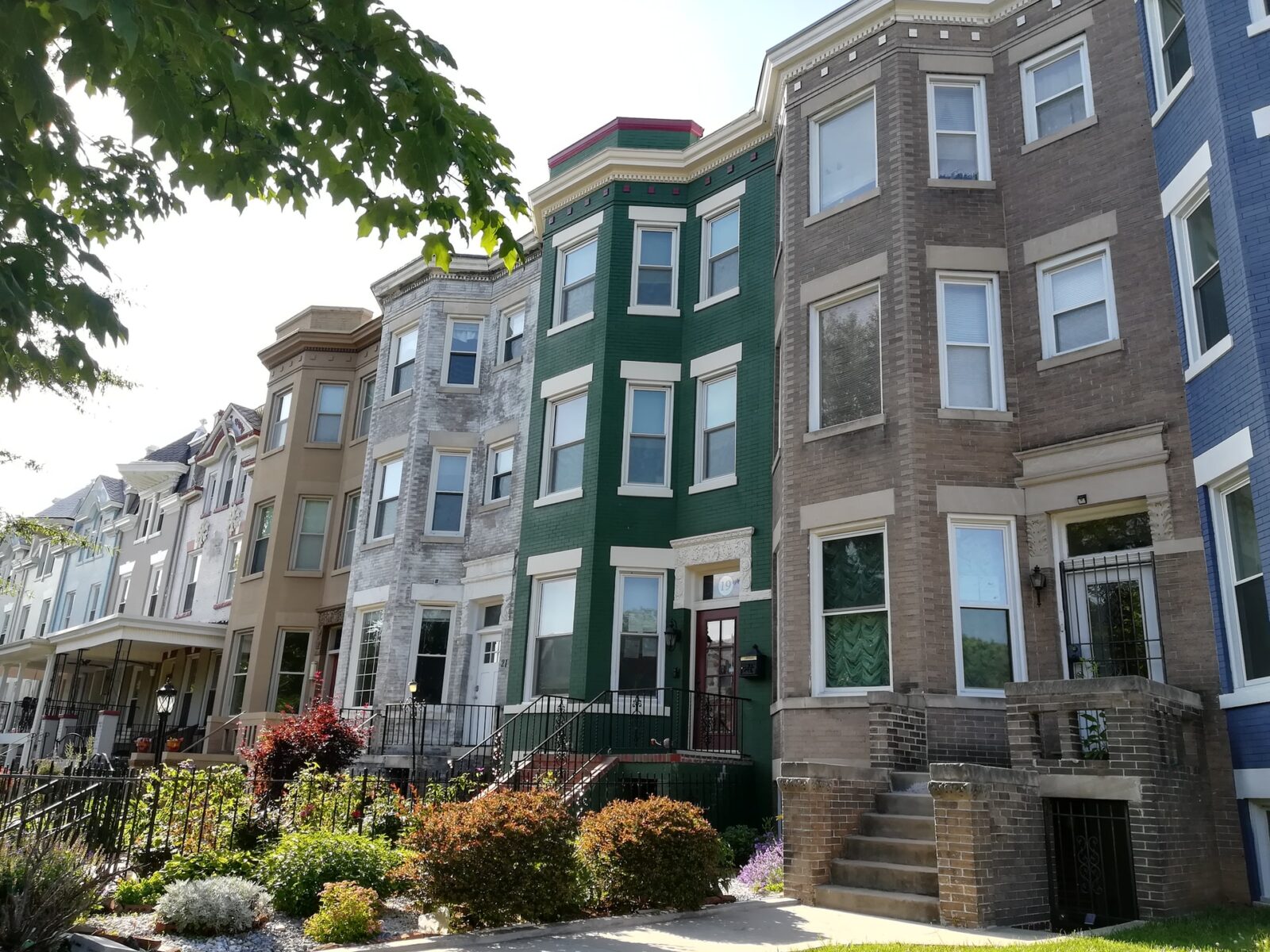As a beginner real estate investor, one term you should acquaint yourself with is 1031 exchange. Also referred to as the like-kind properties exchange, 1031 exchange generally involves the sale of one investment property to purchase another. The essential condition is that they must be similar. Consequently, some people refer to it as a swap, but the primary feature is that it allows capital gains tax deferral.
This idea originated from the section 1031 code of the Internal Revenue Service (IRS). Its provision allows investment property owners to defer federal tax payments for some real estate exchanges. However, one frequently-asked question is, “how long do you have to do a 1031 exchange?” This article answers that and provides insight into your concerns about the process.
The 1031 Exchange Process for Investment Properties
The 1031 exchange is a norm in investment real estate, but it has specific intricacies. That’s why it’s essential to understand the process and steps to getting new property. As aforementioned, the deferment of capital gains taxes is a significant benefit, and it may apply to several house types, including vacation rentals and apartment buildings.
Subsequently, we’ve simplified the process of how to do a 1031 exchange regardless of the rental property type and they include:
-
Identify the Property You Want to Sell
Like in most transactions, the first step is to identify what you want to sell. This aspect applies especially to real estate investors with more than one property obtained because they have options. Whether or not that’s the case, you must ensure to consider vital factors, including market value, before choosing.
-
Identify the Property You Want to Buy
Besides the relinquished property, it’s necessary to identify the one you want to buy as the next step in this process. Real estate investors should note that the replacement property must be of equal or greater value than the former holding. That’s because it’s essentially an exchange, and it must fulfill the internal revenue code’s condition.
-
Choose a Qualified Intermediary
There’s a qualified intermediary mandate by the Internal Revenue Service, whether for personal property or not. An exchange accommodator or qualified intermediary is a financial institution charged with receipt of the money and transfer to the new party. They aim to facilitate the like-kind asset class swap without direct cash receipt. That way, the transparency and safety of the funds for the 1031 exchange are ensured.
-
Allocate the Sale Proceeds to the New Property
Next is to decide how much of the relinquished property’s sales proceeds will go towards the new property. For an ideal 1031 exchange, you must spend at least the amount you sell the old one. However, other conditions allow real estate investors to defer their capital gains tax while reinvesting only a portion of the funds.
-
Keep an Eye on the Calendar
The real estate industry is time-dependent regarding specific processes like the 1031 exchange. Therefore, it’s essential to know how long to hold an investment property. You should watch the calendar during this period and ensure timelines. That’s because some fluctuating factors like property value and inflation may have a level of influence.
-
Be Careful With the Money’s Whereabouts
Savvy real estate investors are particular about the whereabouts of the 1031 exchange funds. That’s why you need a trustworthy, qualified intermediary because they’re vital to the transaction, whether it’s personal property or apartment building. Hence, ensure that the chosen institution is one you have used before or have notable recommendations.
-
Get the Appropriate Contracts
The sales contracts and necessary documentation are vital for the 1031 exchange transaction’s transparency and legality. Therefore, you must have them drawn up and signed by the involved parties before sending them to the qualified intermediary. Add a relinquished property addendum to identify an exchange and not a regular sale.
-
Tell the IRS About Your Transaction
After the primary process, you must report the 1031 exchange to the internal revenue service by filing the IRS form 8824. It’s essential to file the document with your tax returns for the year you made the original transaction. That ensures you get to defer capital gains tax on the relinquished property while taking control of the replacement property.
Essential Time Limits to Know

This method of acquiring investment property requires holding, so it’s normal to ask, “how long do I need to sell an investment property in a 1031 exchange?” One thing that might be time-consuming is identifying the potential replacement properties. Hence, some people hire real estate brokers to care for that, especially for rental property or apartment buildings.
Besides that, there are specific time limits real estate investors must be aware of, whether for personal property or an apartment building. That’s because you don’t want to be caught unawares during the 1031 exchange. There are many things to know regarding the timing, and we’ll highlight them below.
-
45-Day Rule
The first 45 days from closing the sale of your investment property is the identification period. That’s because the real estate investors have only that specified time to identify potential replacement properties. Immediately after you sell, the buyers transfer the money to the qualified intermediary to open the exchange.
-
180-Day Rule
After identifying replacement properties, you can acquire the new investment property. The rule presents that you must close on this transaction for the latest real estate assets within 180 days of closing the sale. Either that or you complete it by the due date of your tax return for that particular year. The timeline is strict, but there’s room for extension under certain conditions.
-
Reverse Exchange
For the reverse exchange, both the 45-day and 180-day rules apply. It involves buying a replacement property before selling your property, hence the name. All the regular procedures apply, including that it must be a like-kind property as the new one of equal or greater value. The real estate investors use an exchange accommodation titleholder.
It’s important to note that the two periods are simultaneous, and that means the days don’t start counting from one after the first 45 days but continue concurrently.
Calculating Cost Basis of Investment Property Sales
One thing that can pose a challenge for 1031 exchanges is calculating the cost basis of the new property. Nonetheless, savvy real estate investors take time out to learn the process to help smooth implementation. One reason why knowing it is essential is that it determines the amount of paying capital gains taxes.
The cost basis in real estate is generally the amount of money paid to acquire an investment property based on the value. In the 1031 exchange, it’s a tool for obtaining the tax benefits, and the tax professionals or exchange facilitators handle the calculation. The basic formula is the cost of the new minus any gain deferred in this transaction.
To simplify the calculation, do the following:
- Add the closing costs to the money paid for the old property together with any capital improvements made.
- Get the adjusted basis by subtracting the total depreciation amount from the earlier combined value.
The amount obtained goes into the calculation for the total taxable income. That’s why it’s crucial to defer the capital gain tax liabilities of the relinquished property.
1031 Exchange Rules and Regulations
There are specific regulations real estate investors must adhere to per the Internal Revenue code. That includes collecting the exchange funds using qualified intermediaries, the timeline rules, and others. Understanding them before getting involved in the process is necessary, and we’ll discuss them below.
-
Like-kind Property
The first significant 1031 exchange clause is that the new real estate investment property must be similar to the old one or of the same nature. That is a primary requirement to prevent the IRS from making you pay capital gain taxes by deferring it. Therefore, savvy investors must consider going for a like-kind property when it’s time to identify replacement properties.
The like-kind property must also be of equal or greater value to the old one for you to enjoy the capital gains. They classify these assets by their nature and characteristics and not quality. That makes it easy to identify the ones you want for a delayed exchange transaction. It’s necessary because fulfilling this condition allows you to sell an investment property for investment purposes and still avoid paying taxes.
-
Property Identification
A 1031 exchange allows flexibility of identification for a replacement property, but there are three basic rules.
-
Three Property Rule
According to the IRS code, this rule allows the investors to select up to three properties. They can then choose their replacement property from any of them, regardless of the market value.
-
200% Rule
Some people hire a real estate agent because the investors can identify as many properties as possible. The clause here is that the aggregate of their value must not exceed 200% of that of the initial investment property.
-
95% Rule
This one is an exception to accommodate specific conditions under the first two rules. Usually, if the requirements for both the three property and 200% rules are unmet, it’s as good as not identifying any replacement property. Only that it doesn’t apply if you want to acquire one that’s worth at least 95% of its value by the end of the exchange period.
-
Timelines
We discussed the time limits earlier; you can revisit that for the rules. The Internal Revenue Code doesn’t specify a period to hold a replacement property. Nevertheless, it states that it mustn’t be primarily for sale, putting it at a minimum of two years.
That means real estate investors can’t carry out a 1031 exchange and then sell. So you must keep the new asset for use in trade to qualify for this capital gains tax deferment. It may not even be a rental property but must serve investment or business purposes, and that’s the general basis of it being a like-kind exchange.
1031 Exchange for Vacation Homes

One frequent question about the 1031 exchange concerns the inclusion of vacation homes. It’s unlike the traditional apartment buildings, so the loopholes in this area are tight. However, it’s possible to work something out since it mostly doubles as a rental property. Thus, having renters would put you in a better position to enjoy the capital gains.
That means the only way to buy an investment property and have it qualify for delayed exchange is as a rental. The 1031 exchange rules require that you rent it out at a fair market value for at least two weeks and not use it personally for up to that same period. The benefit of adhering to this clause is that you can stay there as often as you like after the two-year cap period.
Therefore, the vacation home makes a great investment property, and some people may use it in estate planning. You can keep up with renting it even after the cap period to write off rental expenses and reduce tax, which shows that it’d make an ideal replacement property for investors.
Holding Period Requirements in a 1031 Exchange
The investor must intend to hold a 1031 exchange investment property and not immediately resell. Therefore, you must prove that the replacement property has a specific purpose—for example, an apartment building for renting out the various units. There are requirements for the holding period, and it’s essential to note them.
-
The Timeline
Ideally, there’s a timeline for keeping the replacement property despite not being given explicitly by the Internal Revenue Service. Some people set it at 12 months, but that’s not exactly a lengthy period. However, the commonly established time among investors is two years, and that’s because the IRS isn’t likely to question your asset’s eligibility if held for investment for that long.
-
The Use of the Property
Some people use the delayed exchange process for estate planning purposes or to diversify their assets. However, there are specified uses for the real estate asset if you defer capital gains taxes. It must either be a rental property or used in trade or business during the holding period, which shows that you’re using it in investment.
The Role of Real Estate Agents in 1031 Exchange
Since the delayed exchange isn’t your typical property sale and purchase, some people question the role of the real estate broker. Nonetheless, they’re still vital to investment advice and specific aspects of the transaction.
Thus, a professional agent knows the Internal Revenue Code and its intricacies. That includes understanding the basics of the process and the transaction and giving excellent direction. They advise the client on when a 1031 exchange is favorable for the capital gains.
These professionals also help to identify the ideal replacement property. Thus, the real estate agent’s job doesn’t revolve around regular property sales.
Conclusion
The 1031 exchange is advantageous for various reasons, including the tax return or deference on the investment property. It’s also a delicate process requiring understanding the different parts—for example, getting a qualified intermediary and how their involvement makes it a three-party exchange. Hopefully, you’re ready not to utilize this option and grow your investment portfolio. However, ensure you work with an exchange accommodator or qualified intermediary like NNN Deal Finder.
Have More Questions? Ask Us Today!
Many investors struggle to pay taxes on their investment property or real estate assets and seek better opportunities. NNN Deal Finder can facilitate 1031 exchanges to navigate that, so contact us today to answer your questions.

